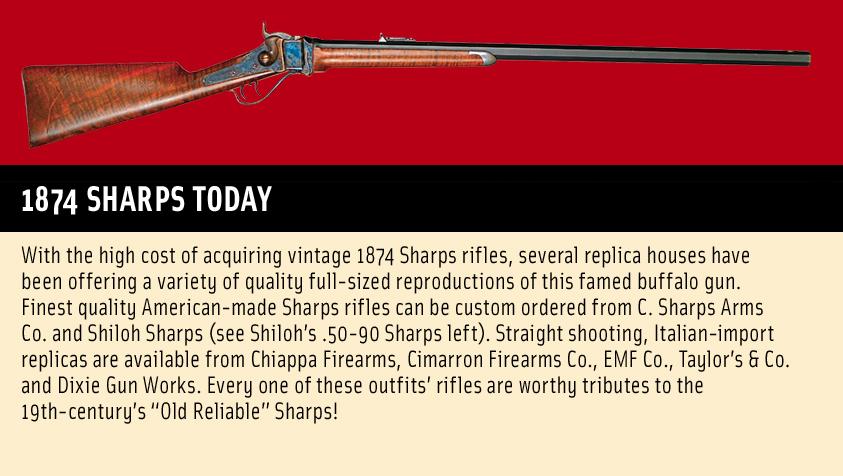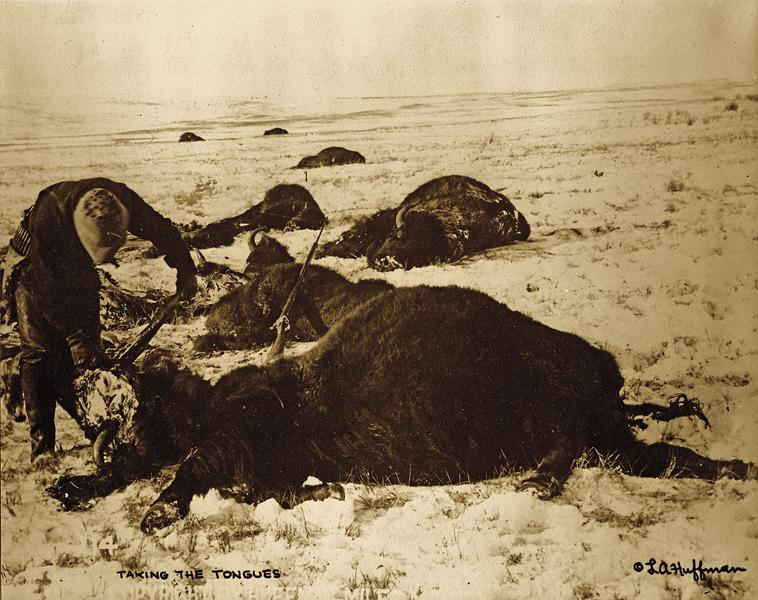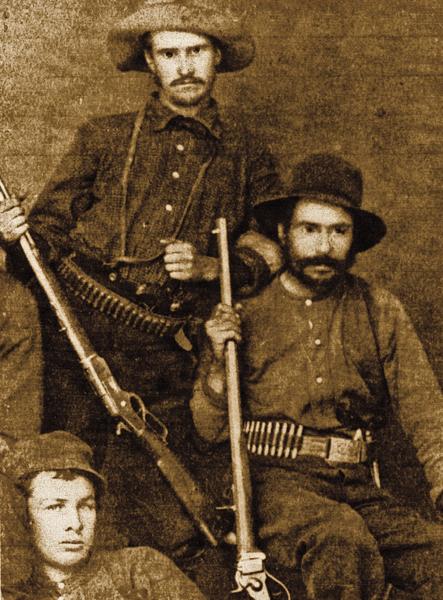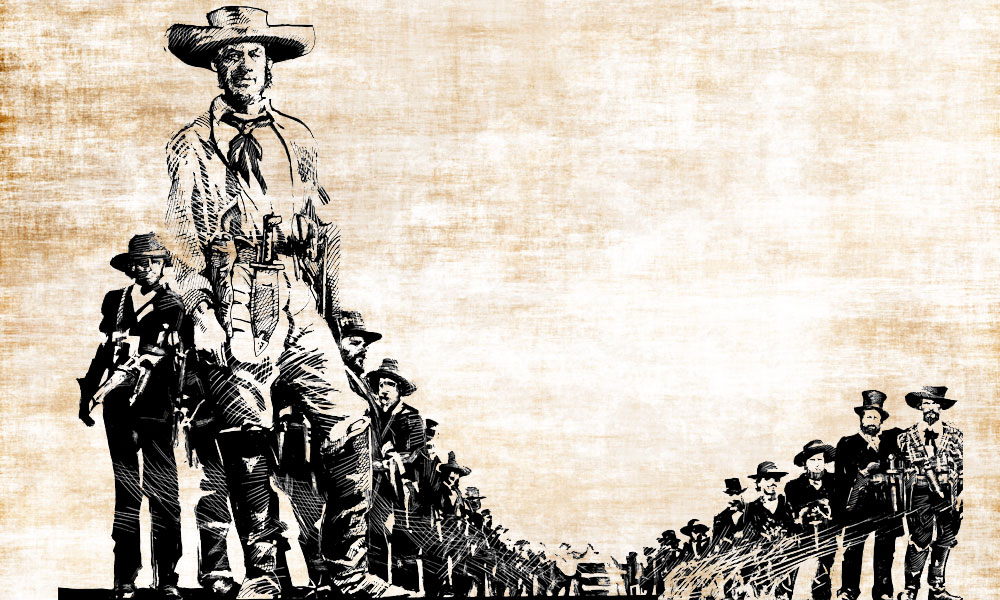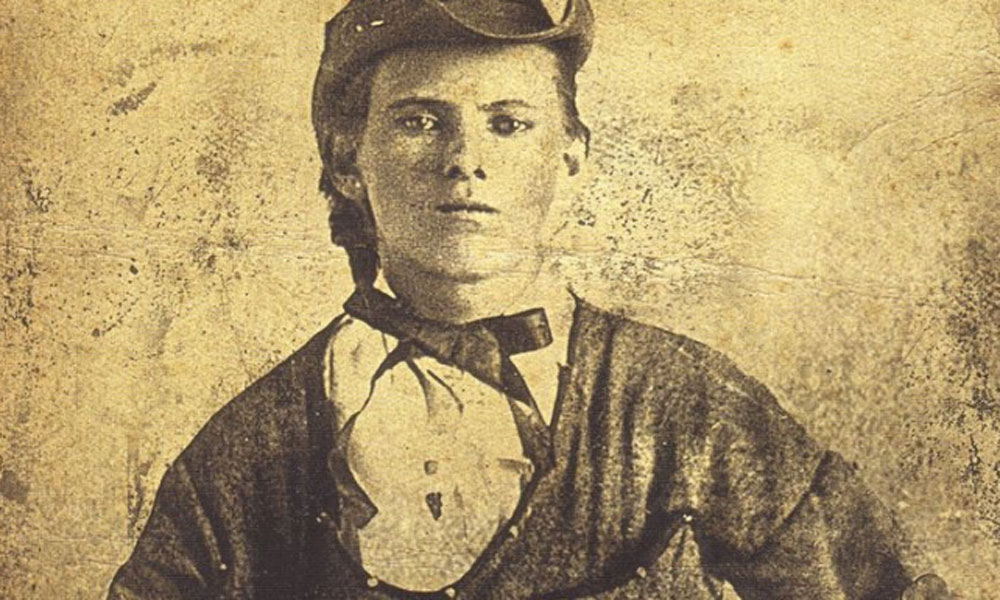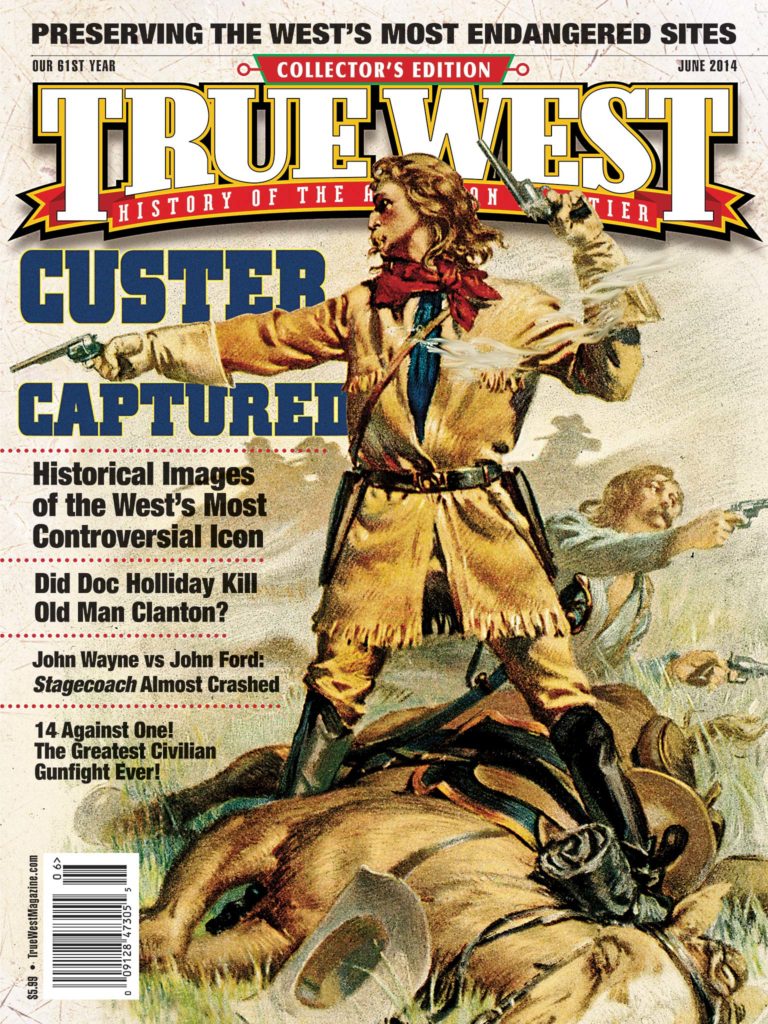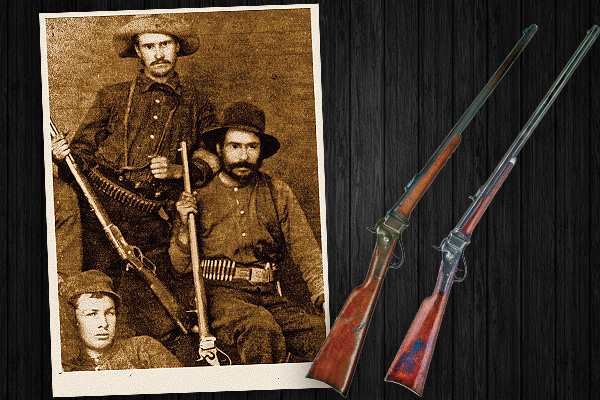 During the June 1874 battle of Adobe Walls in the Texas Panhandle, where an estimated 700 Comanche, Kiowa and Cheyenne warriors attacked nearly 30 hide hunters, young hunter Billy Dixon made a remarkable 1,538-yard shot at a mounted Indian, from his borrowed Model 1874 Sharps, in .50-90 caliber—and he dropped him, thus effectively ending the fight!
During the June 1874 battle of Adobe Walls in the Texas Panhandle, where an estimated 700 Comanche, Kiowa and Cheyenne warriors attacked nearly 30 hide hunters, young hunter Billy Dixon made a remarkable 1,538-yard shot at a mounted Indian, from his borrowed Model 1874 Sharps, in .50-90 caliber—and he dropped him, thus effectively ending the fight!
Long-distance shots like this one caused the Indians to christen the Sharps with colorful titles such as the “Shoot Today, Kill Tomorrow” or “Shoots Far” gun.
Buffalo hunters favored Sharps rifles above all others, until the end of the hide-hunting years in the mid-1880s. In the hands of these expert shots, Sharps rifles earned immortality in the annals of American West history.
The Sharps Rifle Manufacturing Company produced a total of only 12,688 Model 1874s, in several variations, reported Frank M. Sellers and De Witt Bailey III in their excellent booklet, Sharps Firearms, Volume III, Part III, Model 1874 Rifles. Among this number are the Sporting, Creedmoor, Mid Range, Long Range, Schuetzen, Business, Hunters, “A,” Springfield and Military rifles, and Carbine model. These models were all made with their own sub-variations, and as few as two of certain designations were manufactured.
By far, the most favored ’74 Sharps was the Sporting rifle, with a total production of 6,441. Sharps factory and arms dealer E.C. Meacham, of St. Louis, Missouri, produced some of these Sporting rifles by converting earlier percussion models to metallic cartridge rifles.
The ’74 Sharps rifle, with its dropping block action, featured many options. A barrel could be octagon, round or half-round, ranging from 21½ inches to 36 inches, and weighing from seven to 25 pounds. Buyers could add double set triggers, special sights and a fancy stock. The company made the single-shot in .40, .44, .45 and .50 calibers, with the .44-77 and .45-70 being the most popular.
The famed “Big Fifty” Sharps, in .50-2½-inch case length (.50-90, .50-100, .50-110), was the largest chambering produced at the factory. The .50-3¼-inch (.50-140) case wasn’t introduced until 1880, after Sharps ceased manufacturing guns, although the company didn’t officially close until September 1883.
The list price during the 1870s for the Sharps Sporting rifle was $33. With the addition of extras, a customer could run his cost up to around $100 or more—a tidy sum in the days when a $20 “double eagle” would purchase a Colt Single Action Army revolver.
Shooters willingly paid the price, as Sharps had long established an excellent reputation for reliable and accurate rifles. Hunters and soldiers called the Sharps “Old Reliable,” a sobriquet that, starting in 1876, was stamped on the barrels of many of the rifles.
The “1874” moniker was rather deceiving since production of this model had started in January 1871 in Hartford, Connecticut. Not until Sharps introduced the Borchardt action in 1878 did the company designate the rifle as the “Model 1874,” probably to commemorate the reorganization of the “Sharps Rifle Company,” which had moved to Bridgeport in 1876. Regardless of the name the single-shot had, no other rifle of the Old West era has earned a record equal to that of the 1874 Sharps.
Phil Spangenberger has written for Guns & Ammo, appears on the History Channel and other documentary networks, produces Wild West shows, is a Hollywood gun coach and character actor, and is True West’s Firearms Editor.
Photo Gallery
– Courtesy Phil Spangenberger Collection / Photo by Ron Paxton –
– True West Archives –
– Courtesy Phil Spangenberger Collection / Photo by Ron Paxton –
– Courtesy Herb Peck Jr. Collection –


